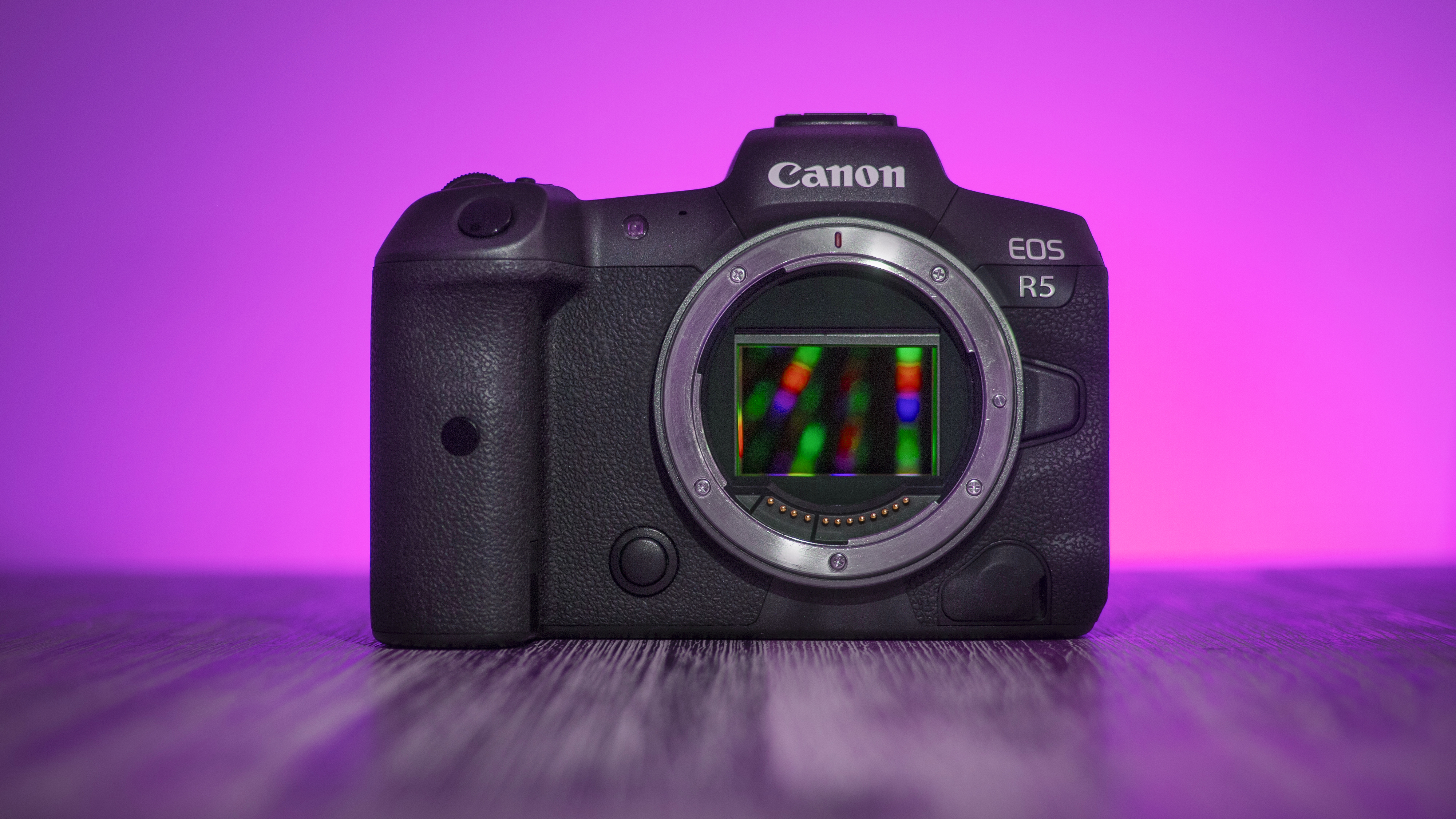Canon EOS R5 Mark II: specs, speculation and expectation for the new camera
The Canon EOS R5 Mark II is the worst-kept secret in the industry. Here's what to expect from the new 5-series beast

The Canon EOS R5 Mark II has been heavily rumored all year, with an announcement believed to be imminent.
Everyone knows that the original Canon EOS R5, launched in 2020, was a gigantic success for the company. The 5-series has long been the backbone of Canon's business when it comes to stills cameras, dating back to the EOS 5D DSLRs and EOS 5 SLR film cameras before that. But the EOS R5 took things to the next level by being the first consumer camera to offer 8K video.
The R5 was such a success, and so future-proof, that four years later it's still on sale – and still very much a cutting-edge camera, even by today's standards. So what are we realistically looking at from an R5 Mark II?
Well, in terms of specifications, this is what we're supposedly looking at:
• 45MP stacked sensor
• Fully electronic shutter
• 60fps continuous shooting
• 8-stops in-body image stabilization system
• Dual Pixel AF II with AI-powered autofocus
• New Digic X family processor
• 8K 60p / 4K 120p video
• 400MP IBIS Hi-res shot
No huge surprises there, and it all rings true to me – and brings the camera even more in line with the Nikon Z8 / Z9, the flagship camera from its key rival. I always felt that the R5 was pretty much in line with the Z8 / Z9 anyway, but the addition of 8K 60p really does present feature parity (provided that the heating dissipation is as robust) – and the continuous shooting takes it to feature superiority.
Yes, the Nikons do offer a top burst speed of 120fps, but only for 11MP JPEGs; they only shoot full 45.7MP JPEGs at 30fps, and 45.7MP RAWs at 20fps. While the R5 Mark II may not match the crazy top speed (which will be the job of the EOS R1), it will drastically outgun them in terms of standard full-resolution shooting. An improved stacked sensor will give the R5 Mark II the necessary speed for stills and video without sacrificing sensitivity the way global shutters do.
The best camera deals, reviews, product advice, and unmissable photography news, direct to your inbox!
There has been speculation that the camera will also introduce C-Log2, Canon's best log profile, in addition to C-Log1 and C-Log3. Personally I'm skeptical about this; as much as Canon has got better at not segregating camera specs these days, I feel that it will continue reserving C-Log2 for its Cinema EOS bodies (it may show up in the EOS R5C that will no doubt follow in due course).
I'm intrigued as to what the new AI autofocus features will be, though it makes sense that a new image processor will be required to power them. Canon has previously talked about scene and environment recognition, but perhaps it will offer something similar to the "human pose estimation technology" seen in the Sony A9 III, which is designed to offer predictive tracking based on skeletal movements.
Whatever it ultimately involves, this AI AF feature is the only part of the camera that proposes real revolution to me. Yes, tripling the burst rate is nothing to be sniffed at, but in terms of core specs – the things that most of the market pays most attention to – we're still looking at the same 45MP resolution and 8K video that was the original R5's calling card.
Evolution is perfectly fine, of course. This is, after all, Canon's most important camera; if it ain't broke, ain't no need to fix it.
Take a look at the best Canon cameras, along with the best Canon lenses for DSLRs and the best Canon RF lenses for mirrorless.

James has 25 years experience as a journalist, serving as the head of Digital Camera World for 7 of them. He started working in the photography industry in 2014, product testing and shooting ad campaigns for Olympus, as well as clients like Aston Martin Racing, Elinchrom and L'Oréal. An Olympus / OM System, Canon and Hasselblad shooter, he has a wealth of knowledge on cameras of all makes – and he loves instant cameras, too.

